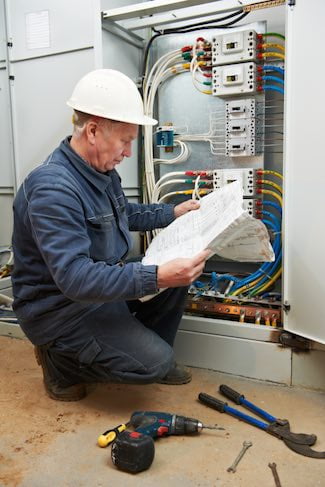The Consequences of Neglecting Electrical Enclosure Temperature Control
 Electrical equipment manufacturers generally recommend enclosure temperatures be kept below 95ºF (35ºC). Active cooling maintains the electrical components at constant operating temperature, providing a longer and more reliable life span. A crucial first step in determining whether a temperature controlled electrical enclosure is necessary for your industrial application is calculating the heat load.
Electrical equipment manufacturers generally recommend enclosure temperatures be kept below 95ºF (35ºC). Active cooling maintains the electrical components at constant operating temperature, providing a longer and more reliable life span. A crucial first step in determining whether a temperature controlled electrical enclosure is necessary for your industrial application is calculating the heat load.
Besides thermal, other environmental requirements such as moisture and dust must also be considered.
The cost of installing a reliable enclosure cooling system can be far less than the cost of future equipment failure. For this reason it’s best to plan electrical enclosure temperature control during the initial design phase and prior to installation.
The Consequences of Using Natural Ventilation to Cool Electrical Enclosures
To repair or replace electrical equipment can get expensive. However, parts and labor alone are not even the biggest expense once electrical equipment has already failed. Relying solely on natural ventilation can lead to serious problems:
- Plant shut-down – Equipment failure during a manufacturing run can lead to drops in production and inventory levels. Employees are also affected by down-time while equipment is under repair.
- Customer inconvenience – When production orders cannot be fulfilled due to electrical failures, your customers are inconvenienced. This will have a negative impact on your company if your customers look to your competitors to have their demands met.
- Safety Hazard – Excess heat could lead to fires in un-cooled electrical enclosures causing damage to other components in the enclosure and surrounding equipment.
- Higher maintenance costs – Excess heat in enclosures makes components work harder, shortening their lifetime and leading to premature failure. Replacing electrical components more frequently than normal will increase maintenance costs and downtime.
Investing in a quality enclosure cooling system for your electrical equipment from the start can help prevent these consequences. Proper cooling keeps components operating efficiently, reducing the risk of equipment failure and other associated costs.
Consider the potential savings you will experience by ensuring that your electrical components are properly cooled and continuously protected. Electrical devices such as variable speed drives have lower maximum operating temperatures than traditional electro-mechanical components and are often limited to 105°F (40°C). Yet summer temperatures can often reach 120°F (48°C) in many regions across the U.S.
Choosing an Enclosure and Cooling System for Your Application
Neglecting electrical enclosure temperature control isn’t worth the risk.
Circumstances surrounding each installation are very unique and several factors should be considered when choosing a method of enclosure cooling. Using fan-assisted ventilation to control enclosure temperature may be sufficient if a sealed enclosure is not required and the ambient temperature is lower than the desired enclosure air temperature. However, if a sealed enclosure is needed, an air to air heat exchanger may be the solution. For demanding situations with both higher ambient temperature and heat load, a closed loop air conditioner would be a better option.
It’s important to plan a cooling system that provides the longest life possible for your electrical components, saving you money in the long run. Carefully consider your options during the selection process to ensure you make a wise investment.
Eliminate measurements and guesswork for your project and ask to speak with a sales
representative today or request a free quote.

